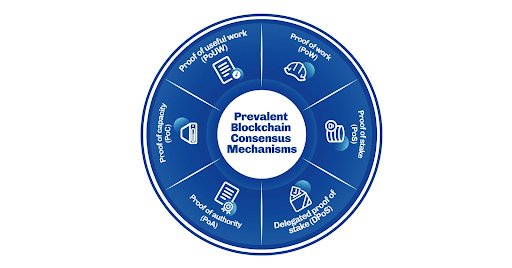- The vast majority of blockchains are built on a decentralized network.
- PoW and PoS are two of the most well-known consensus protocols.
- There isn’t a universal consensus mechanism that works for all business models.
According to Input Output Media, You may learn a lot about a blockchain’s levels of security, scalability, decentralization, and transaction verification techniques by examining its consensus process.
The majority of blockchains are composed of a distributed network of independent nodes that cooperate to provide the transactions that occur on the network they all share.
Therefore, any blockchain network must include a system that enables its nodes to communicate with one another and agree on which transactions are valid and ought to be recorded in the blockchain. A consensus mechanism is a decentralized method for determining the actual state of a blockchain.
Proof of work (PoW) and proof of stake (PoS) are two of the most well-known consensus protocols, however there are others (and several variants below).

PoW (Implemented by Satoshi Nakamoto in 2009) depends on computer competition (mining) to crack moderately challenging riddles. The right to mine a new block on the blockchain is given to the miner who discovers a potential answer to a query next.
A more recent, less energy-intensive, and hence more sustainable consensus process than PoW is proof of stake (PoS). By assigning their stake to a validator, holders of a blockchain asset can take part in securing and confirming on-chain transactions through PoS consensus.
A consensus mechanism called proof of authority (PoA) may be more appropriate for private networks. A committee is trusted to execute validation rather than staking the chain’s digital assets, as opposed to public (i.e., permissionless) participation.
Several other mechanisms still exist such as Delegated proof of stake (DPoS), Proof of capacity (PoC) and Proof of useful work (PoUW) which is a new and sustainable consensus mechanism.
However, right now, there isn’t a universal consensus mechanism that works for all business models. You must take into account the different aspects that relate to your goods or services, such as the amount of transaction speed you require, the stability of the network, and the gas cost, if any, for conducting transactions.

